The educational materials listed on this page are about Integrated Crop and Livestock Systems.
Crops and livestock were traditionally integrated in most farming systems. Integrated crop and livestock farming can improve nutrient cycling. Integrated management, or integrated farming, can also reduce off-farm impacts and improve water management. Integrated crop livestock systems also interrupt pest cycles on farms. Reduced economic risk through diversification on integrated crop-livestock systems is an added benefit to the integrated production system. Resources on integrated farm systems can be recycled more efficiently. Integrated crop and livestock operations may also benefit from increased efficiency in yields. The advantages to integrated agriculture are numerous for both the land and the farmer. Key practices include crop rotation, nutrient management, nutrient cycling, forage management, multispecies grazing, pasture fertility, physical control, stocking rate.
SARE’s Crop Rotation on Organic Farms: A Planning Manual can help farmers identify strategies that will help improve soil quality and health, and manage pests, diseases and weeds. A Whole-Farm Approach to Managing Pests is a helpful bulletin that serves as a guide in designing a farm-wide approach to controlling pests. Visiting The Small Ruminant Toolbox will aid producers looking to diversify their operation by incorporating small livestock enterprises, which provide added benefits to crop rotation and pest and weed control.
Showing 1-10 of 18 results
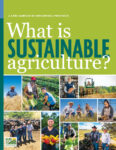
What is Sustainable Agriculture?
This award-winning report provides a sampler of best practices in sustainable agriculture—from marketing and community vitality to cover crops and grazing—as well as eight profiles of producers, educators and researchers who have successfully implemented them.
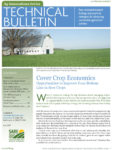
Cover Crop Economics
Cover crops can build soil health, control weeds, conserve moisture, provide grazing opportunities and more. But when do they start to pay for themselves? This analysis looks at the economics behind different management scenarios to determine if cover crops are likely to improve profitability in one, three or five years of use in corn and soybean rotations.

What is Soil Health?
Soil health plays an essential role in raising healthy, productive crops and livestock. With this interactive infographic, learn how practices such as cover crops, no-till, crop rotation and the integration of livestock work in concert to improve soil health.

Special Topics with Cover Crops and Soil Health
Organic and Specialty Crops Grazing Cover Crops Soil Health Policy Issues
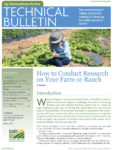
How to Conduct Research on Your Farm or Ranch
This 32-page bulletin outlines how to conduct research at the farm level, offering practical tips for both crop and livestock producers, as well as a comprehensive list of more in-depth resources.
Cover Crops as Part of an Overall Nutrient Management System
In this session, Steven Mirsky (USDA-ARS) and Heather Darby (University of Vermont) discuss the role of cover crops in integrated fertility management and address cover crops in the context of forages, dairies, perennials and pastures, and rotating pasture to grain.
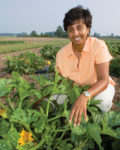
National Continuing Education Program
This program is designed for Cooperative Extension and Natural Resource Conservation Service personnel, and is also open to farmers, ranchers, and other agricultural professionals nationwide. It emphasizes core concepts and a basic understanding of sustainable agriculture, its goals and its relevance to every farming and ranching operation—large or small. The core of the national continuing education program is a series of three online courses. Take them now.
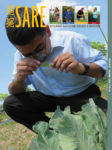
2015/2016 Report from the Field
Read about SARE-funded work in the areas of sustainable dairy cropping systems, soil health assessments, nutrient management, cover crops, beginning farmers, pollinators, technical assistance programs for women farmers, and more. This edition includes highlights of projects funded through the graduate student program, and the highly regarded Sustainable Agriculture Fellowship, a professional development program coordinated by SARE and NACAA.
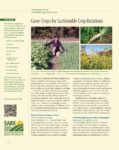
Cover Crops for Sustainable Crop Rotations
Cover crops are one of the best ways to improve soil health, reduce off-farm inputs and protect natural resources. Find a wealth of educational materials developed out of decades of SARE-funded cover crop research.
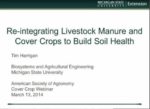
Combining Livestock, Manure and Cover Crops
A livestock and cover crop combination is the fastest way to profit from your investment.